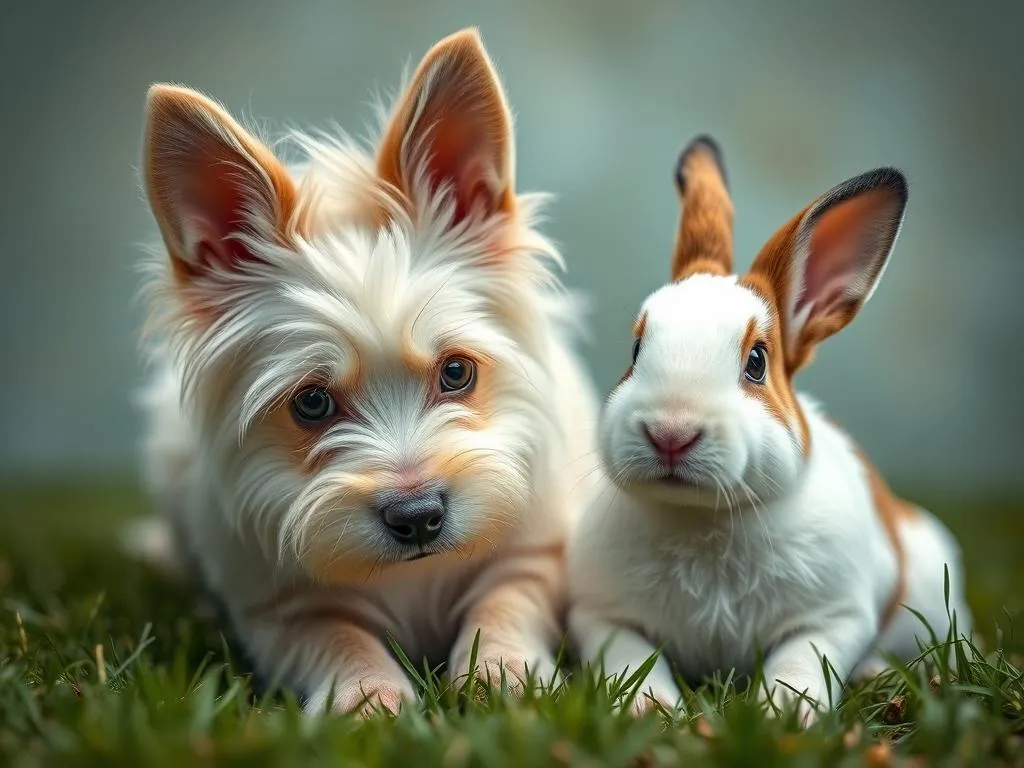
Understanding the dynamics between different pet species is crucial for any animal lover considering expanding their furry family. The question of whether dogs and bunnies get along is a common concern among pet owners. While dogs are often known for their playful and sociable nature, rabbits possess instincts that make them cautious around potential predators. This article delves into the behaviors of both species, explores factors that influence their compatibility, and offers insights into fostering a harmonious relationship between these two adorable pets.
Understanding Dog and Bunny Behavior
Dog Behavior
Dogs, as descendants of wolves, have natural instincts that can sometimes clash with the fragile nature of smaller animals like bunnies. Their instinctual behaviors often include hunting and chasing, which can pose a risk to a rabbit’s safety. However, many dogs are also social animals that enjoy interacting with other pets. They can be gentle and nurturing, especially if they have been properly trained and socialized from a young age.
Bunny Behavior
On the other hand, bunnies are prey animals, instinctively built to be wary of potential threats. Their natural behavior involves seeking safety and hiding from predators. Rabbits are also social creatures, but they have specific territorial needs and can become stressed when in unfamiliar situations or around potential threats. Understanding these behaviors is vital for ensuring safe interactions between dogs and bunnies.
Factors Influencing Compatibility
Breed Characteristics
When considering whether dogs and bunnies get along, breed characteristics play a significant role. Some dog breeds are known for their gentleness and are often better suited for cohabiting with smaller animals. Breeds like Golden Retrievers, Cavalier King Charles Spaniels, and Beagles are typically more tolerant and gentle. Conversely, breeds such as terriers or those with a strong prey drive may pose a danger to a bunny. It’s essential to research and understand the specific traits of your dog’s breed before introducing a rabbit into the household.
Individual Temperament
Beyond breed characteristics, each pet has its unique personality. Assessing the individual temperament of both the dog and the bunny is crucial for determining compatibility. Signs of aggression or fear can manifest in both species. A dog that shows excessive excitement or aggression towards the bunny may not be suitable for cohabitation. Similarly, a rabbit that becomes overly fearful or stressed at the sight of a dog may need more time and space before any interaction.
Age and Size Differences
Age and size are also significant considerations. Puppies may have a higher tendency to chase and play roughly, which could be overwhelming for a fragile bunny. Adult dogs, especially those that are well-trained, may exhibit more self-control. Size differences matter too; a small dog might be safer around a bunny than a large dog, but this is not always the case. Every interaction should be carefully monitored.
Preparing for Introductions
Creating a Safe Environment
Before introducing a dog and a bunny, it’s essential to create a safe and controlled environment. Setting up separate spaces for each pet can provide a sense of security. Use barriers like baby gates to keep the pets apart initially, allowing them to get used to each other’s scent without direct contact. Supervised introductions are critical; never leave the two animals alone until you are confident in their behavior around one another.
Gradual Introduction Techniques
When it’s time for introductions, take it slow. Start with short, supervised sessions. Keep the dog on a leash to control its movements. Allow the bunny to roam freely in a safe space, observing the dog from a distance. Gradually decrease the distance between them as long as both animals remain calm. Look for signs of successful introductions, such as relaxed body language and curious exploration. If either pet shows signs of stress, it’s important to separate them and try again later.
Monitoring Interactions
Positive Reinforcement
Using positive reinforcement is a powerful method to encourage good behavior between your dog and bunny. Reward both pets with treats and praise when they exhibit calm behavior in each other’s presence. For example, if the dog sits quietly while the bunny is nearby, offer a treat to reinforce that behavior. This creates a positive association with one another, which is essential for their long-term relationship.
Recognizing Signs of Stress
Monitoring both pets’ body language is crucial during interactions. Dogs may show stress through excessive barking, growling, or rigid body posture, while rabbits may thump their hind legs, flatten their ears, or try to hide. Recognizing these signs early can prevent escalation and protect both animals. If you observe any signs of distress, separate them immediately and reassess the situation.
Long-term Coexistence Strategies
Training and Socialization
Training is essential for fostering a peaceful coexistence between dogs and bunnies. Teaching basic commands to your dog such as “sit,” “stay,” and “leave it” can help maintain control during interactions. Consistent training helps reinforce desired behaviors and encourages your dog to be calm around the bunny. Additionally, socializing your rabbit with other pets can help reduce fear and anxiety when meeting new animals.
Creating Safe Spaces
Designating separate safe spaces for each pet can significantly enhance their comfort levels. Create a cozy area for your bunny where it can retreat if feeling threatened. Similarly, your dog should have a designated space where it feels secure. Enrichment activities, such as toys and puzzles for both pets, can also keep them engaged and content, reducing the likelihood of stress-related behaviors.
Conclusion
In summary, the compatibility of dogs and bunnies hinges on a variety of factors, including individual behaviors, breed characteristics, and socialization techniques. While the prospect of having both pets in the same household can be delightful, it requires careful planning and consistent monitoring. Understanding the instincts of each species, preparing for introductions thoughtfully, and employing positive reinforcement will help foster a loving relationship between your dog and bunny.
Ultimately, every pet is unique; assessing their personalities and behaviors is key before making the leap into a multi-pet home. With the right approach, the joy of having both dogs and bunnies can enrich your life in countless ways.
FAQs
-
Can dogs and rabbits live together peacefully?
Yes, with proper introductions and monitoring, many dogs and rabbits can coexist peacefully. -
What dog breeds are best with rabbits?
Breeds known for their gentle nature, like Golden Retrievers and Cavalier King Charles Spaniels, tend to be better companions for rabbits. -
How can I tell if my dog is too aggressive for a bunny?
Signs of aggression may include barking, growling, lunging, or fixating on the rabbit. If your dog displays these behaviors, further training may be needed. -
Is it safe to leave a dog and rabbit alone together?
It is not recommended to leave them alone together until you are completely confident in their ability to interact safely. -
What should I do if my bunny is scared of my dog?
Allow your bunny to retreat to its safe space and gradually reintroduce them in a controlled manner, ensuring your bunny feels secure.
By understanding and respecting the unique behaviors of each species, you can create a harmonious home that celebrates the companionship of both dogs and bunnies.









